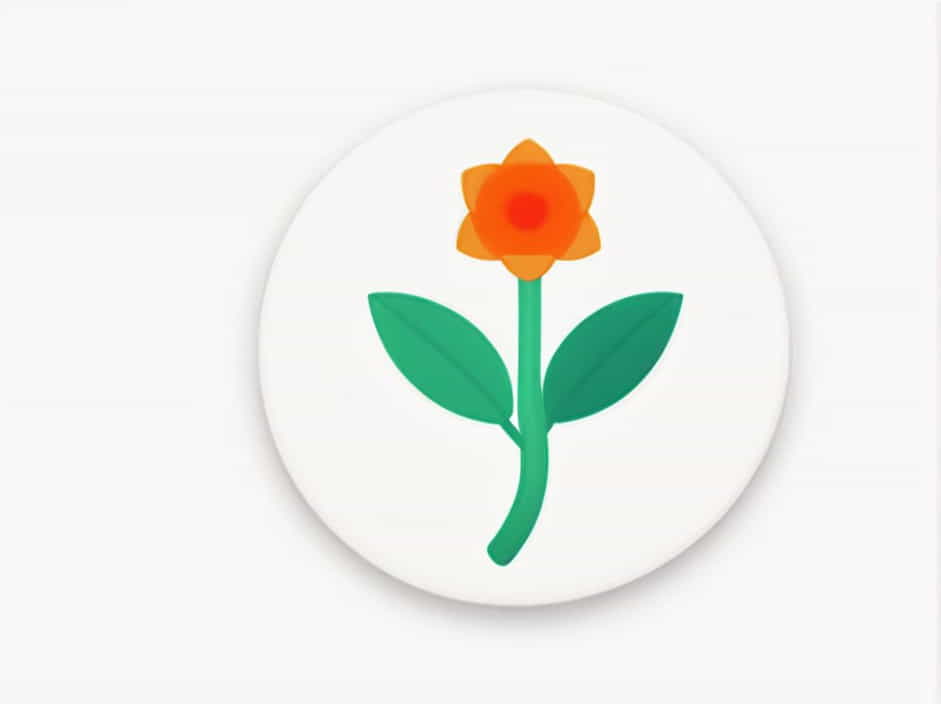Vascular tissue is a fundamental component of flowering plants, responsible for transporting water, nutrients, and food throughout the plant. It consists of two main types: xylem and phloem, which work together to maintain plant health and growth. But where does this vital tissue originate?
The development of vascular tissue in flowering plants is a complex process that begins in specialized plant tissues called meristems. These tissues are responsible for cell division and differentiation, leading to the formation of vascular tissue. This topic will explore the origin, development, and function of vascular tissue in flowering plants in an easy-to-understand way.
1. What Is Vascular Tissue?
Vascular tissue is a network of specialized cells that form the transport system in plants. It allows the movement of water, minerals, and sugars from one part of the plant to another, ensuring proper growth and survival.
Types of Vascular Tissue
-
Xylem – Transports water and minerals from the roots to the rest of the plant.
-
Phloem – Carries sugars and nutrients from the leaves to other parts of the plant.
Together, these tissues form vascular bundles, which are strategically arranged in stems, roots, and leaves.
2. Where Does Vascular Tissue Develop From?
The vascular tissue in flowering plants develops from meristematic tissue, which is responsible for plant growth. There are two key types of meristems involved in vascular tissue formation:
1. Procambium
-
The primary source of vascular tissue in young plants.
-
Develops from apical meristems found in root and shoot tips.
-
Differentiates into primary xylem and primary phloem.
2. Vascular Cambium
-
Forms secondary xylem and secondary phloem in woody plants.
-
Develops from lateral meristems, allowing plants to grow in thickness.
-
Produces new vascular tissue as the plant matures.
Both procambium and vascular cambium play crucial roles in the continuous development of vascular tissue, ensuring efficient transport of resources.
3. The Role of Apical and Lateral Meristems
1. Apical Meristems (For Primary Growth)
-
Found at the tips of roots and shoots.
-
Generate procambium, which gives rise to primary xylem and phloem.
-
Responsible for lengthwise growth in young plants.
2. Lateral Meristems (For Secondary Growth)
-
Located in the vascular cambium and cork cambium.
-
Produce secondary xylem (wood) and secondary phloem.
-
Allow plants to grow wider over time.
These meristems ensure a continuous supply of vascular tissue, supporting growth, transport, and structural stability.
4. Xylem Development in Flowering Plants
1. Primary Xylem
-
Develops from procambium in young stems and roots.
-
Forms two types of cells: tracheids and vessel elements, which transport water.
2. Secondary Xylem
-
Formed by vascular cambium in mature plants.
-
Becomes part of wood in trees and shrubs.
-
Supports plant structure and long-term water transport.
Key Functions of Xylem
✔️ Transports water from roots to leaves.
✔️ Provides mechanical support to the plant.
✔️ Helps in mineral distribution.
5. Phloem Development in Flowering Plants
1. Primary Phloem
-
Originates from procambium in young plants.
-
Made up of sieve tube elements and companion cells for sugar transport.
2. Secondary Phloem
-
Develops from vascular cambium in mature plants.
-
Forms inner bark, aiding in nutrient movement.
Key Functions of Phloem
✔️ Transports sugars from leaves to other parts of the plant.
✔️ Supports plant metabolism and energy storage.
✔️ Assists in wound healing and nutrient recycling.
6. Vascular Bundle Arrangement in Flowering Plants
The arrangement of vascular bundles varies between monocots and dicots:
1. In Monocots
-
Vascular bundles are scattered throughout the stem.
-
No secondary growth due to the absence of vascular cambium.
2. In Dicots
-
Vascular bundles are arranged in a ring.
-
Allow secondary growth due to the presence of vascular cambium.
This structural difference influences growth patterns and longevity in flowering plants.
7. Importance of Vascular Tissue in Flowering Plants
Vascular tissue is essential for plant survival and plays multiple roles:
1. Water and Nutrient Transport
-
Xylem carries water from the roots to leaves.
-
Phloem distributes sugars and nutrients to all plant parts.
2. Structural Support
-
Xylem provides rigidity to prevent wilting.
-
Phloem maintains plant turgor pressure.
3. Growth and Adaptation
-
Vascular cambium enables tree rings formation in woody plants.
-
Helps plants adapt to environmental conditions.
4. Healing and Regeneration
-
Damaged vascular tissue can be replaced through cell division in meristems.
-
Helps plants recover from injury.
8. Factors Influencing Vascular Tissue Development
Several factors affect how vascular tissue develops and functions:
1. Genetic Factors
-
Plant species determine vascular tissue arrangement and function.
-
Some plants have thicker vascular bundles for durability.
2. Environmental Conditions
-
Water availability influences xylem efficiency.
-
Temperature and light affect vascular differentiation.
3. Plant Hormones
-
Auxins and cytokinins regulate vascular development.
-
Gibberellins promote xylem and phloem formation.
4. Mechanical Stress
- Plants facing wind or heavy rainfall develop stronger vascular tissues.
Understanding these factors helps in improving crop production and plant resilience.
9. Applications of Vascular Tissue Research
Scientists and agriculturists study vascular tissue development for:
1. Improving Crop Yield
- Modifying vascular tissue for efficient water and nutrient transport.
2. Enhancing Drought Resistance
- Developing plants with stronger xylem to withstand dry conditions.
3. Understanding Tree Growth
- Studying vascular cambium activity to determine tree age.
4. Biotechnology and Genetic Engineering
- Manipulating vascular tissue genes for higher productivity.
Vascular tissue in flowering plants develops from meristematic tissues, primarily procambium and vascular cambium. These tissues ensure the formation of xylem and phloem, which are vital for transport, support, and plant survival.
Understanding vascular tissue development helps in agriculture, forestry, and plant science, allowing scientists to improve crop efficiency and environmental adaptation. By studying the mechanisms of vascular tissue formation, we can enhance plant growth and sustainability for the future.
